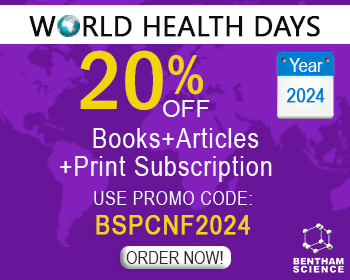Abstract
Recent progress in the field of cellular reprogramming has opened up the doors to a new era of disease modelling, as pluripotent stem cells representing a myriad of genetic diseases can now be produced from patient tissue. These cells can be expanded and differentiated to produce a potentially limitless supply of the affected cell type, which can then be used as a tool to improve understanding of disease mechanisms and test therapeutic interventions. This process requires high levels of scrutiny and validation at every stage, but international standards for the characterisation of pluripotent cells and their progeny have yet to be established. Here we discuss the current state of the art with regard to modelling diseases affecting the ectodermal, mesodermal and endodermal lineages, focussing on studies which have demonstrated a disease phenotype in the tissue of interest. We also discuss the utility of pluripotent cell technology for the modelling of cancer and infectious disease. Finally, we spell out the technical and scientific challenges which must be addressed if the field is to deliver on its potential and produce improved patient outcomes in the clinic.
Keywords: Induced pluripotent stem cells, human embryonic stem cells, neurodevelopmental disorders, endodermal disorders, mesodermal disorders, reprogramming, disease modelling
Current Gene Therapy
Title:Modelling Human Disease with Pluripotent Stem Cells
Volume: 13 Issue: 2
Author(s): Richard Siller, Sebastian Greenhough, In-Hyun Park and Gareth J. Sullivan
Affiliation:
Keywords: Induced pluripotent stem cells, human embryonic stem cells, neurodevelopmental disorders, endodermal disorders, mesodermal disorders, reprogramming, disease modelling
Abstract: Recent progress in the field of cellular reprogramming has opened up the doors to a new era of disease modelling, as pluripotent stem cells representing a myriad of genetic diseases can now be produced from patient tissue. These cells can be expanded and differentiated to produce a potentially limitless supply of the affected cell type, which can then be used as a tool to improve understanding of disease mechanisms and test therapeutic interventions. This process requires high levels of scrutiny and validation at every stage, but international standards for the characterisation of pluripotent cells and their progeny have yet to be established. Here we discuss the current state of the art with regard to modelling diseases affecting the ectodermal, mesodermal and endodermal lineages, focussing on studies which have demonstrated a disease phenotype in the tissue of interest. We also discuss the utility of pluripotent cell technology for the modelling of cancer and infectious disease. Finally, we spell out the technical and scientific challenges which must be addressed if the field is to deliver on its potential and produce improved patient outcomes in the clinic.
Export Options
About this article
Cite this article as:
Siller Richard, Greenhough Sebastian, Park In-Hyun and J. Sullivan Gareth, Modelling Human Disease with Pluripotent Stem Cells, Current Gene Therapy 2013; 13 (2) . https://dx.doi.org/10.2174/1566523211313020004
| DOI https://dx.doi.org/10.2174/1566523211313020004 |
Print ISSN 1566-5232 |
| Publisher Name Bentham Science Publisher |
Online ISSN 1875-5631 |
Call for Papers in Thematic Issues
Programmed Cell Death Genes in Oncology: Pioneering Therapeutic and Diagnostic Frontiers (BMS-CGT-2024-HT-45)
Programmed Cell Death (PCD) is recognized as a pivotal biological mechanism with far-reaching effects in the realm of cancer therapy. This complex process encompasses a variety of cell death modalities, including apoptosis, autophagic cell death, pyroptosis, and ferroptosis, each of which contributes to the intricate landscape of cancer development and ...read more
Related Journals
 100
100
- Author Guidelines
- Graphical Abstracts
- Fabricating and Stating False Information
- Research Misconduct
- Post Publication Discussions and Corrections
- Publishing Ethics and Rectitude
- Increase Visibility of Your Article
- Archiving Policies
- Peer Review Workflow
- Order Your Article Before Print
- Promote Your Article
- Manuscript Transfer Facility
- Editorial Policies
- Allegations from Whistleblowers
- Announcements
Related Articles
-
Synthetic Cannabinoids as Drugs of Abuse
Current Drug Abuse Reviews Pulmonary Hypertension and Systemic Diseases
Current Drug Targets - Inflammation & Allergy Prevention of Atherosclerosis by Interference with the Vascular Nitric Oxide System
Current Pharmaceutical Design GRK2 and Beta-Arrestins in Cardiovascular Disease: Established and Emerging Possibilities for Therapeutic Targeting
Current Molecular Pharmacology TiO2-Nanowired Delivery of Mesenchymal Stem Cells Thwarts Diabetes- Induced Exacerbation of Brain Pathology in Heat Stroke: An Experimental Study in the Rat Using Morphological and Biochemical Approaches
CNS & Neurological Disorders - Drug Targets Atrial Remodeling and Novel Pharmacological Strategies for Antiarrhythmic Therapy in Atrial Fibrillation
Current Medicinal Chemistry There is a Link Between Erectile Dysfunction and Heart Failure: It could be Inflammation
Current Drug Targets Atrial Conduction Disorders
Current Cardiology Reviews Intracellular Calcium Homeostasis and Kidney Disease
Current Medicinal Chemistry The Role of Transforming Growth Factor-β in Cardiac Fibrosis
Current Enzyme Inhibition Prolylcarboxypeptidase Gene Expression in the Heart and Kidney: Effects of Obesity and Diabetes
Cardiovascular & Hematological Agents in Medicinal Chemistry Omecamtiv Mecarbil: A Myosin Motor Activator Agent with Promising Clinical Performance and New in vitro Results
Current Medicinal Chemistry Cardiovascular Imaging in Thromboembolic Risk Stratification for Atrial Fibrillation: Recent Patents and Current Practice
Recent Patents on Medical Imaging TTR Fibril Formation Inhibitors: Is there a SAR?
Current Medicinal Chemistry Coated with Nanomaterials Intraocular Lenses, Ophthalmic and Human Body Implantable Devices with High Catalytic Antioxidant Activities: A New Nanotechnology Strategy of Peroxidase Cellular Enzyme Mimics Increasing the Biocompatibility and Therapeutic Deployment of the Medical Prosthetic Device
Recent Patents on Drug Delivery & Formulation Epigenetic and Disease Targets by Polyphenols
Current Pharmaceutical Design Glucocorticoids and the Cardiovascular System: State of the Art
Current Pharmaceutical Design Pharmacotherapy in Neonatal and Pediatric Extracorporeal Membrane Oxygenation (ECMO)
Current Drug Metabolism Patent Selections:
Recent Patents on CNS Drug Discovery (Discontinued) Late Sodium Current Inhibition: The Most Promising Antiarrhythmic Principle in the Near Future?
Current Medicinal Chemistry























